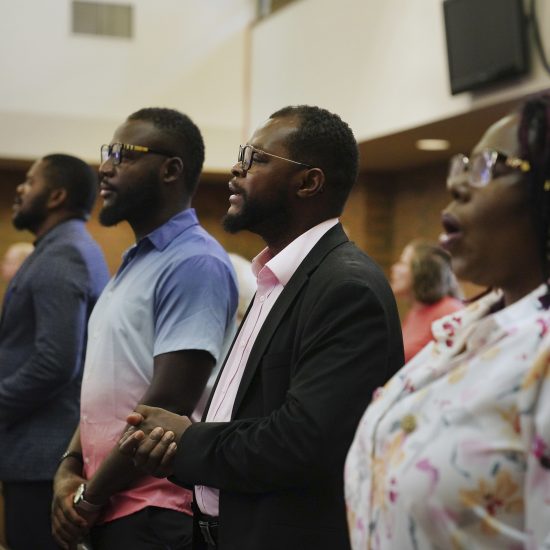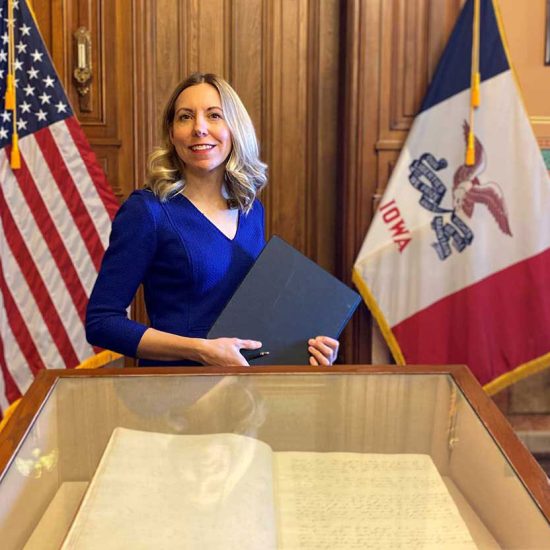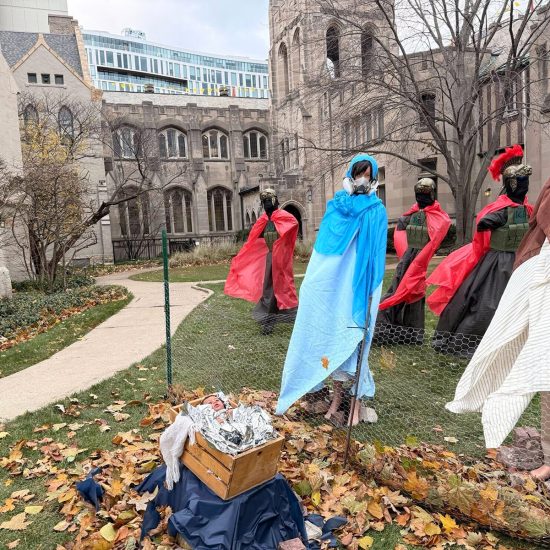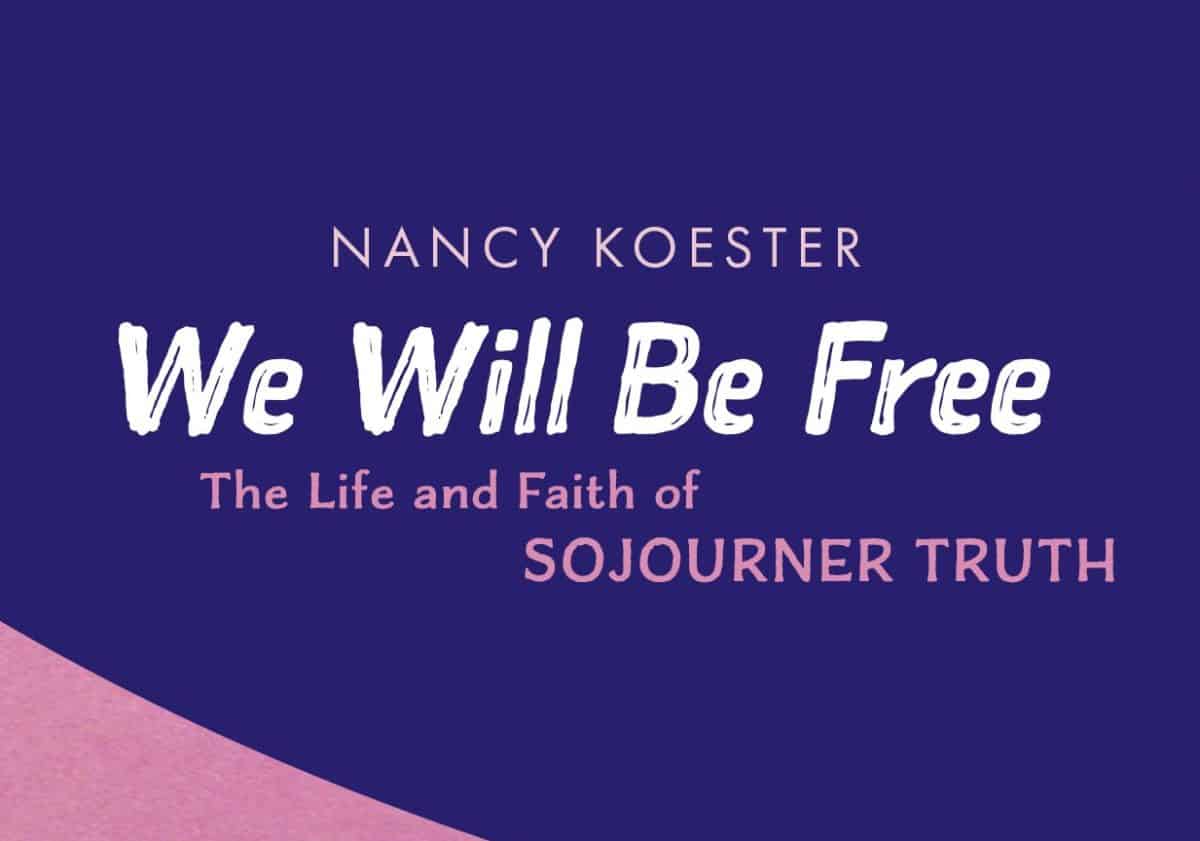
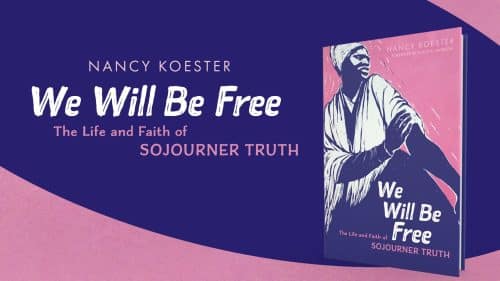
WE WILL BE FREE: The Life and Faith of Sojourner Truth. (Library of Religious Biography). By Nancy Koester. Forword by Alicia K. Jackson. Grand Rapids, MI: Wm. B. Eerdmans Publishing Company, 2023
Slavery has been declared America’s “Original Sin.” Unfortunately, it is a sin that continues to be passed on from generation to generation even if slavery as an institution has been eradicated. Nonetheless, the effects of this sin can still be seen across the land as racism hasn’t disappeared. Slavery has left its stain on our history, and efforts to avoid the topic (as seen in the efforts to downplay or remove discussions of racism in our schools and other institutions in the name of avoiding divisive topics) cannot erase this reality. Thus, even though many wish to avoid acknowledging this truth, the truth remains.

Robert D. Cornwall
One way to respond to those who wish to avoid this conversation is to lift up the stories of those who endured slavery and worked to overturn it. Their voices continue to ring out, we just need to listen. We know the names of some of these individuals, such as Frederick Douglass and Harriett Tubman. Numbered among the most powerful voices for change in that era was Isabella Van Wagenen, better known as Sojourner Truth. Her story is powerful and enlightening. Hers is the story of a woman born into slavery, who gained freedom, and became an abolitionist, while also taking hold of her calling to preach.
Nancy Koester’s biography of Sojourner Truth is titled We Will Be Free: The Life and Faith of Sojourner Truth. It is the word “faith” that is a key component of this story, as Koester stresses the importance of Sojourner Truth’s faith to her work as an abolitionist and advocate for freed African Americans following emancipation. Nancy Koester, the author of this important biography, holds a Ph.D. in church history and is an ordained ELCA minister. Her scholarly work has focused on nineteenth-century American history, with a focus on the anti-slavery movement, the Civil War, and Reconstruction. That background provides an important foundation for this biography, which appears as part of the Eerdmans Library of Religious Biography. Koester contributed a previous volume to this series on Harriet Beecher Stowe, a figure who appears in this story as well.
While I have known the name Sojourner Truth and that she was an important figure in the abolitionist movement, I knew very little of her story, what made her an important figure in that movement and in American history, until I read this compelling biography. The fact that Sojourner Truth rose from slavery to become a leading voice for civil rights for African Americans as well as advocating for women’s rights, while never learning to read or write, catches one’s attention. At least it should. How does someone rise from such a place to become an important voice for justice and faith?
This is the story of a woman named Isabella, who was born into slavery in New York State around 1797. It may surprise many (I didn’t know this), but slavery remained legal in the state of New York until 1827. It was especially prominent among Dutch farmers. Therefore, Isabella grew up speaking Dutch and a dialect known as Afro-Dutch. While Dutch was her first language, she would learn English as she moved out of that context. The context of her early life is also reflected in her Dutch surname Van Wagenen, a name she took from the surname of the last family into which she was enslaved before she fled her situation a year before the emancipation of all slaves took place in New York in 1827. We learn why this is true as we read the book.
After Isabella escaped slavery (in New York), she became active as a preacher and an activist. In the course of this movement into preaching and activism, she took on a new name, the name Sojourner Truth. As Sojourner Truth, she would become a powerful advocate for abolition, civil rights, and women’s rights. Again, she did this even though she never learned to read or write. What she possessed was a keen mind, a great memory, and a powerful speaking voice. Thus, hers is a story worthy of attending to.
Koester takes us on a journey that begins with Isabella’s birth into slavery in the Hudson Valley of New York. It is a journey that, as is often the case with slavery, her movement from one owner to another. We learn of the birth of her children, one of whom was sold to a family in the South even though that was illegal in New York. We learn about how her commitment to the cause of justice began as she sought to reclaim her son from slavery so that he might return to the family. That required going to court, which she did, and she successfully brought her son home. What is interesting is that even as Isabella fought for justice, she was also a loyal and hard worker. Therefore, she was a valuable piece of property to her owners. While she was loyal, in the end, she decided to flee from slavery in 1826 and moved to New York City. Due to her willingness to work hard, she gained employment with several wealthy families. At the same time, she got drawn into several millennialist movements that were running rampant during that period. This included the movement led by William Miller. What these millennialist movements did was provide her with the opportunity to develop her sense of call to preach. They also provided her with community, something she deeply desired. Eventually, she would become part of a community of abolitionists in Northampton, Massachusetts. It was there that she became acquainted with the leading abolitionists of the day, as well as receiving the opportunity to tell her story of enslavement and freedom. It is in the course of these events that she changed her name to Sojourner Truth.
In Koester’s telling of Sojourner’s story of her life and faith, we encounter a woman who became a major abolitionist figure, appearing at abolitionist rallies and women’s rights conventions. In these appearances, she told her story and called for change in the nation. In 1851, she published her memoir, which was told to a friend who transcribed her story, while also embellishing it. Therefore, there are elements in the memoir that are less than accurate. One of the areas of concern regarding the inaccuracies in the memoir surrounds the question of her age. Her co-author made Truth between ten and twenty years older than she actually was. One of the struggles that Truth had, according to Nancy Koester, has to do with control of her image. She had to fight hard to control her image, and one way she did this was to have her picture taken, from which she had picture cards published. She would then sell the cards to help support her work. She was also concerned about the way her speeches were reported. While she requested that her speeches be transcribed in standard English, reporters and others would record her speaking in plantation English, something she never used. It’s important to remember that while she was born into slavery, it was in New York and not the South. Additionally, she was enslaved by Dutch farmers, so her first language was Dutch and the English she learned was standard English. Nevertheless, despite her attempts to have her speeches reported accurately, the press and even Harriet Beecher Stowe continued to portray her as speaking in plantation English.
Eventually, prior to the Civil War, Sojourner Truth made her home in Battle Creek, Michigan. While she spent significant time on the road, Battle Creek would remain her home until her death. When she was on the road, she spoke boldly on matters including abolition and women’s rights. Then after the end of the Civil War, she focused her attention on achieving civil rights for African Americans, especially the freedmen. One of her efforts was to encourage freedmen to move to places such as Kansas, where she believed they could make a home and build a life. The way she supported herself in pursuing these aims, was through the sale of her memoir, which was updated several times, and her picture cards.
This is a unique life, whose full story requires a biography such as this one. While Sojourner Truth was an abolitionist and an advocate for civil and women’s rights, she was first and foremost a follower of Jesus. She might not have the ability to read or write (she attempted to learn, but found the effort difficult), but throughout her life, she would have the Bible read to her, which allowed her to memorize and make use of the scripture in her speeches and most importantly in her preaching. I found it interesting that as she sought to learn the message of the Bible, she preferred to have children read the Bible to her. She preferred the children to adults because the children didn’t try to explain the Bible to her.
Sojourner Truth is perhaps best known to many for her “Ain’t I a Woman” speech, which she first delivered in 1851 to the Women’s Rights Convention in Akron, Ohio. Three different versions of the speech can be found in the book’s appendix. In the version reported by the Anti-Slavery Bugle in 1851, she spoke of her physical and intellectual strength as a woman. She reported that she could outwork any man and that “I am as strong as any man that is now” (p. 221). As for a woman causing a man to sin, she declared: “Well, if woman upset the world, do give her a chance to set it right side up again” (p. 222). Unfortunately, the version reported in 1863 in the National Anti-Slavery Standard, puts her speech in plantation English (pp. 222-223). A 1972 version offers a standard English version, and here we can hear the famous plea: “Ain’t I a woman?” She declared and then asked: “I have borne thirteen children, and seen most all sold off into slavery, and when I cried out with my mother’s grief, none but Jesus heard me! And ain’t I a woman?” (p. 224).
Sojourner Truth was a leading voice for the abolition of slavery, women’s rights, and civil rights for freedmen after the way. Thus, she was a formidable woman to the very end of her life. Nevertheless, she endured poverty most of her life. That is due in large part to the fact that whatever money she did gain from selling her memoir or her picture cards, was used to support others in need. While she purchased a home in Battle Creek it was essentially a barn. What she did, however, in the course of a very long and fruitful life that began in slavery, was leave a lasting legacy through her constant witness to the equality of all people, especially Black women.
Biographies of this sort are important because they help us get to know the fuller identity of important figures who often remain a mystery to us. We know the name and perhaps a portion of the story, but ultimately we know very little about the person. I think Sojourner Truth is one of those people whose name is compelling, but we may not know why she carried this name. In the course of the book, we learn why she chose this name. She spent her life as a sojourner, wandering the country proclaiming the truth. That truth, for her, was rooted in and empowered by her faith. That is why this particular biography is so important. Throughout the book, Koester keeps Sojourner Truth’s faith front and center. She might have sojourned in what many would call fringe communities, but she often did so because it was those communities that gave women, especially Black women the opportunity to preach. That is important to the story, for Sojourner Truth might be a powerful speaker, and that ability was rooted in her call to preach.
When it comes to her message, it focused on caring for the welfare of the other. Thus, I find it intriguing that Sojourner Truth’s last speech took place in Lansing, Michigan. That speech was given to the Michigan Legislature, which was debating a bill that would authorize the use of hanging as capital punishment. She spoke to the legislature calling for them to reject capital punishment. There in June 1881, not long before her death, she spoke against this law, because she could not believe that her beloved Michigan would do such a thing. She reminded the legislature that “the religion of Jesus is forgiveness.” So, she asked how she could pray “Father forgive me as I forgive those who trespass against me,” and then turn around and support the use of hanging as punishment. In her mind, hanging was murder and contrary to the way of Jesus (p. 216). Even to the end, she stood firm for what was right. That commitment was rooted in her faith. How sad that even today we continue to embrace capital punishment. Indeed, only recently a legislator in a state somewhere in the United States called for the reinstitution of hanging. Sojourner Truth was correct in her critique then and would, in my mind, continue to be right today!
The books that form the Eerdmans series Library of Religious Biography, at least the ones I’ve read, have been informative and thoughtful. They lift up the role of faith and religion in the lives of the figures that are explored and do so in a way that stays clear of hagiography. That is true here. We Will Be Free tells the story of Sojourner Truth as a truly human person, with her foibles as well as her glories. I believe Nancy Koester is to be commended for bringing to life the powerful story of a woman whose voice rang out at important moments during her lifetime, and whose voice still needs to be heard, especially at this moment when so many people — many of whom claim to be Christians — want to whitewash and ignore the truth of our history. Slavery is the original sin in the United States. It has stained our history and has left its mark on our society to this very moment. Thus, we need to hear the voice of Sojourner Truth cry out to us, calling for us to pay attention to our history and our current realities. In this biography, we read stories that require our attention, and these stories a beautifully and powerfully told. So, let us attend to the words of truth delivered by a woman who took the name Sojourner Truth. As we do so we’ll learn why she chose that name.
This review originally appeared on BobCornwall.com.
Robert D. Cornwall is an ordained minister in the Christian Church (Disciples of Christ). Now retired from his ministry at Central Woodward Christian Church (Disciples of Christ) of Troy, Michigan, he serves as Minister-at-Large in Troy. He holds a Ph.D. in Historical Theology from Fuller Theological Seminary and is the author of numerous books including his latest “Second Thoughts about the Second Coming: Understanding the End Times, Our Future, and Christian Hope” coauthored with Ronald J. Allen. His blog Ponderings on a Faith Journey can be found at www.bobcornwall.com.

